Here it is!
The OFFICIAL full-length trailer for my book, Teaching Is for Superheroes!
Enjoy, Like, and Share with the teachers (and superheroes) in YOUR life!
(And watch for the superhero reveal near the end!)
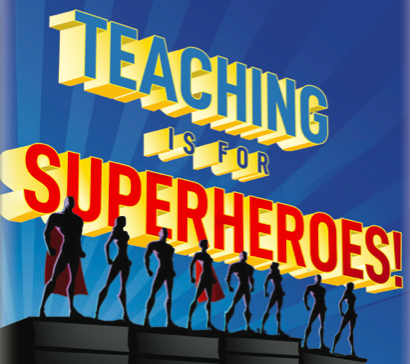
Here it is!
The OFFICIAL full-length trailer for my book, Teaching Is for Superheroes!
Enjoy, Like, and Share with the teachers (and superheroes) in YOUR life!
(And watch for the superhero reveal near the end!)
You’ve probably heard about a little film coming out this month:

Don’t worry, NO SPOILERS here!
In fact, the Avengers: Endgame directors Anthony and Joe Russo have earnestly requested that audiences and critics NOT reveal any details about the movie:
“Because so many of you have invested your time, your hearts, and your souls into these stories, we’re once again asking for your help. When you see Endgame in the coming weeks, please don’t spoil it for others, the same way you wouldn’t want it spoiled for you.”
I’m so wary of spoilers this time around, I refuse to read any preview articles, interviews, or speculation by fans. Likewise, whenever a trailer pops up online or on television, I quickly avert my eyes. I’m suspending my social media use later this week, too, since I don’t trust my friends or myself. No spoilers!
I already know I want to see Avengers: Endgame. I don’t need any pre-release hoopla to motivate me.

Read more about “Keeping Students Motivated.”
We’ve talked about how teachers should avoid spoilers in their classrooms. We must be careful to not sabotage, short-circuit, or short-change our students in the learning process. Authentic understanding arrives through wonder and discovery, making sense as one investigates concepts and applications.
Read more about spoiler alerts here, along with a nostalgic look at the highly anticipated Star Wars: Episode VII – The Force Awakens. (The rumors are already flying about the upcoming Episode IX, and I imagine things will soon hit hyperspace.)

Capture my attention? Done.
That said, excited fan-geeks are NOT the same as your typical student. While teachers should still avoid spoilers, they may need to provide a little more motivation in their classrooms. And they also need to help along the way.
Another applicable entertainment analogy is the “TEASER.”
Merriam-Webster defines “teaser” as “an advertising or promotional device intended to arouse interest or curiosity especially in something to follow.”
Often, a teaser doesn’t directly name the product or event. Teachers can apply the same practice to engage students, but not spoil them with every detail or label.
Teasers can appear many months before the actual event, and here this analogy may not perfectly translate to the classroom.
Rather than waiting several days or weeks, a teacher probably needs the learning pay-off to occur much sooner. This “a-ha moment” could be in the same day, such as fulfilling an introductory question from bellwork. Or teachers could “tease” students with a prompt or “what if?” at the end of one day and return to this topic the next class.

Check out “4 R’s that increase student motivation”
Like spoilers, we’ve discussed teasers before on this blog. Take a look at some superhero examples and classroom applications here.
In the meantime, decide how spoiled you want to be before the next pop culture event. Maybe a new teaser has appeared and piqued your interest.
Either way, find ways to tease – not spoil – your students in the pursuit of learning!
So Guardians of the Galaxy Vol. 2 came out recently, and it’s doing quite well at the box office.

An interesting focus on Vol. 2 has been all the “Easter Eggs” hidden in the film. These brief glimpses are easy to miss, encouraging repeated viewings ($$) and audience scrutinization.
Below is just a sampling of Easter Egg lists made about Guardians Vol. 2:
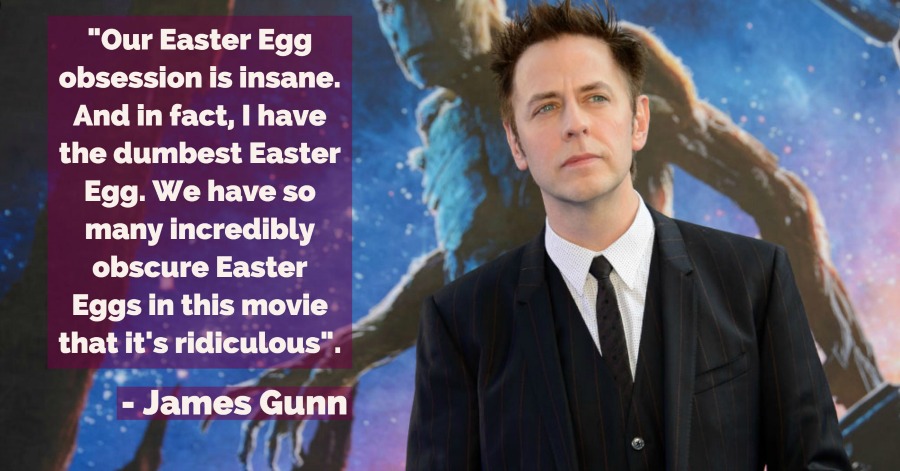
Easter Egg hunts are not just for lesser-known superheroes like the Guardians of the Galaxy. You can find lists of hidden gems in all sorts of superhero movies, from more recent films like Captain America: Civil War and Doctor Strange to the very first entry in the Marvel Cinematic Universe: Iron Man.
My personal favorite Easter Egg is the “circus monkey” drawn by Steve Rogers in Captain America: The First Avenger. In the comics, Steve worked as a freelance artist from time to time. This sketching scene not only alludes to this history, but it also fits perfectly in the context of the movie.
An older sketch-based Easter Egg is the satirical “Bat Man” drawing given to newsman Alexander Knox (Robert Wuhl) in the 1989 Batman movie. If you note the artist’s signature, it’s none other than Batman creator Bob Kane!
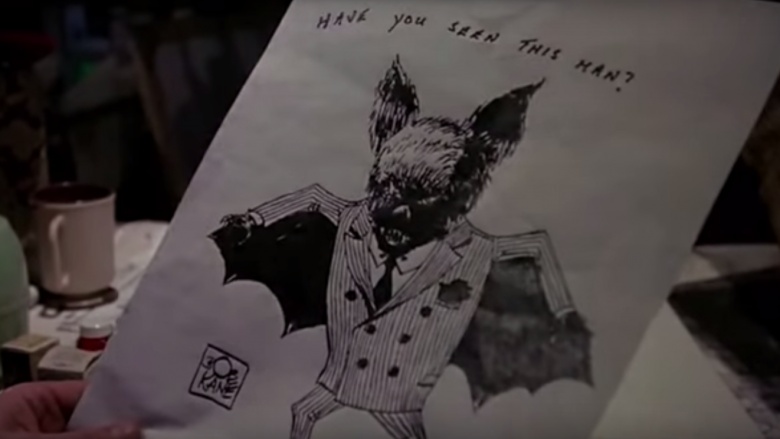
Another name for obscure pop culture references is “deep cuts,” a term from the music industry. Deep cuts are little-known songs on an album that don’t get airtime or attention of more commercial- and radio-friendly singles. Only die-hard fans are familiar with such songs that most of us have never heard.
In the same way, a lot of “deep cuts” in superhero movies are overlooked by casual viewers. Often, these cameos and allusions are included simply as a wink or nod to eagle-eyed fans. Other times, they might be hints of what will happen in an upcoming sequel or spin-off.
Educators know all about “deep cuts,” and we’re NOT talking about financial funding (at least not this time).
For quite a while now, a common phrase in curriculum is “mile wide, inch deep.” Basically the phrase refers to American students learning a lot of general topics at the surface and not enough “deeper” content in more detail. This is NOT a new issue, and is something standards are both blamed for as well as championed for trying to fix.
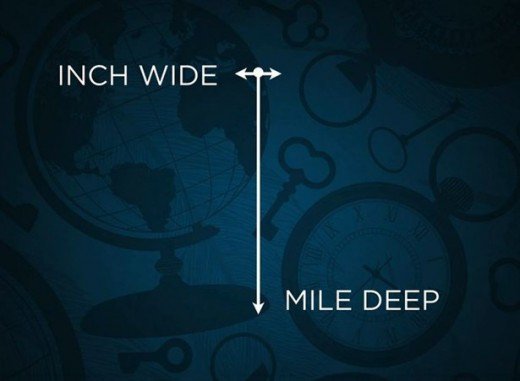
Take a closer look, if interested, at this ongoing topic over the years:
There’s probably not one simple answer to the problem of “quantity over quality.” However, one question to ask is “How deep?”
How much detail and depth do students need with respect to any given topic? Again, standards documents may help in guiding educators to focus on key concepts and skills. But what content is most important? How much of it?
Here is a quote from the 1996 article linked above:
Before they reach high school, American students will have covered more topics than 75% of the students in other countries; yet in many cases, they will have been taught some of the same topics several years in a row.
So it’s not just a matter of “quantity over quality;” it’s also an issue of redundancy.
However, based on what we know about learning, repeated exposure to the same content is actually necessary for helping students develop a solid foundational understanding. Of course, revisiting a certain concept should NOT be a simple rehashing, but involve further exploration, examination, reflection, and application.
Revisiting content should also NOT be mining for trivia. When a lesson dives deep into a subject, often the temptation is to dig up little-known facts that have little worth in the big picture. In other words, educators are focusing on the Easter Eggs, as opposed to the larger story and impact.

Missing the point.
I’m all for trivia games and fun. (Obscure knowledge is part of the fanboy job description.) However, trivia should not come at the expense of meaningful learning and application. In our quest for more depth in subject learning, teachers must be careful not to spend too much time and energy on trivia.
Consider common modifiers that accompany “trivia” and its related terms: useless trivia, absurd information, pointless knowledge, random facts, and even the modifier trivial, which Merriam-Webster defines as “of little worth or importance.”
Sounds like an Easter Egg to me, especially the kind with one measly jelly bean inside.

Black licorice. Nasty.
Teachers, ask yourself if playing Jeopardy! is the best way to review a unit. (Or Pictionary or Trashketball or Classroom Bingo or other review games.) How can you guide students in a more engaging and thorough examination of relevant content? How can you expand upon this information for more application and extensions?
Or in movie terms, how can you entice the audience so they hunger for a sequel?
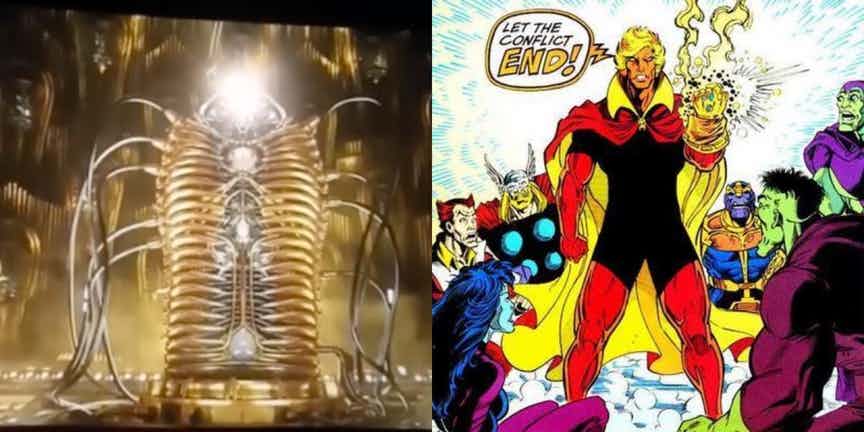
To be continued . . .
What about you? What’s your favorite Easter Egg or deep cut? What is their role in the classroom?
The latest superhero movie teaser to hit the internet is that of Fantastic Four, a.k.a: FANT4STIC:
If a Fantastic Four movie sounds familiar, that’s because there have already been two big budget FF films since 2005.
For an interesting comparison, take a look at the 2005 Fantastic Four movie‘s trailer (starring a pre-Captain America Chris Evans and a post-Commish Michael Chiklis):
Now watch the teaser of the 2015 version:
Quite the difference in tone, don’t you think?
But to me, that’s what makes iconic superheroes so special. Building off a core of archetypal characters and themes, different creators can tell stories through a variety of styles. (And it’s always fun to see fresh new takes on superpowers.)
Like parallel universes in comic books, a parallel application exists in the world of teaching. In order to reach students and inspire meaningful learning, an effective teacher applies his or her individual personality and talents to a framework of fundamental research and established methods.
So let’s talk about some essential elements of effective fantastic teaching, using Marvel’s first family for inspiration (and images courtesy of artist Bruce Timm).
 Egocentric name aside, Mr. Fantastic is known for his amazing intellect as much as his elastic superpowers. Two things we can take from the Fantastic Four’s leader:
Egocentric name aside, Mr. Fantastic is known for his amazing intellect as much as his elastic superpowers. Two things we can take from the Fantastic Four’s leader:
1. Teachers must be smart. For those of us with normal IQ’s, we must do our best to study and develop rich understanding. This growing knowledge base should be limited to our particular subject(s), but all the arts and sciences, and–perhaps more importantly–research on how people learn and applicable teaching strategies.
2. Teachers must be flexible. You don’t have to wear a uniform made of unstable molecules (though it’d be cool to try), but you must be ready to bend, twist, and stretch if you want to stay sane.
 In addition to flexibility, fantastic teachers have a healthy sense of humor, much like the FF’s resident jokester. And figuratively speaking, teachers should be able to instantly “flame on” and fire up a jaded class into a group of enthusiastic learners.
In addition to flexibility, fantastic teachers have a healthy sense of humor, much like the FF’s resident jokester. And figuratively speaking, teachers should be able to instantly “flame on” and fire up a jaded class into a group of enthusiastic learners.
 Here’s where we get more profound. Teachers are often most effective when they stay out of the spotlight. Instead, they put the primary focus on learning and encourage students to take responsibility and leadership in the process.
Here’s where we get more profound. Teachers are often most effective when they stay out of the spotlight. Instead, they put the primary focus on learning and encourage students to take responsibility and leadership in the process.
A common motto used among educators is to relinquish the classroom role of “sage on the stage” and be a “guide on the side.” Sometimes, that guide is so good the students hardly notice his or her presence.
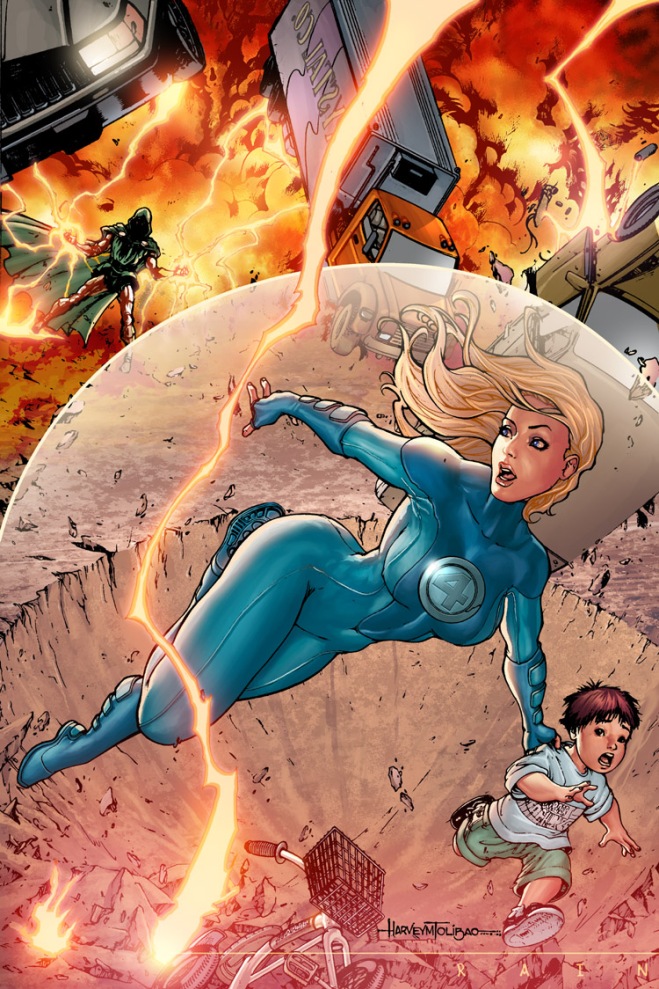 In many ways, Sue Storm has the most powerful abilities among her teammates. Not only can she turn invisible, she also can produce invisible force fields for both offensive and defensive purposes. Teachers must also do their best to protect their students and colleagues from all kinds of dangerous attacks – unseen or otherwise.
In many ways, Sue Storm has the most powerful abilities among her teammates. Not only can she turn invisible, she also can produce invisible force fields for both offensive and defensive purposes. Teachers must also do their best to protect their students and colleagues from all kinds of dangerous attacks – unseen or otherwise.
 In addition to protecting students, fantastic teachers also need to protect themselves. Like the ever lovable, blue-eyed Thing, teachers must exhibit some thick skin. We have to withstand a daily barrage of gripes and wisecracks that rival Dr. Doom’s black magic blasts.
In addition to protecting students, fantastic teachers also need to protect themselves. Like the ever lovable, blue-eyed Thing, teachers must exhibit some thick skin. We have to withstand a daily barrage of gripes and wisecracks that rival Dr. Doom’s black magic blasts.
To use another metaphor, teachers should be judicious in deciding when “It’s clobberin’ time!”
Even fantastic teachers have students who occasionally act out worse than Mole Man’s Moloids. We can’t simply exile these misguided minions into the Negative Zone. But we can’t allow class clowns to ruin everyone else’s opportunity to learn, either.
It takes wisdom (sometimes a Reed Richards-level of intellect) to know how to squash misbehavior without squashing the student (emotionally, that is). It also requires a mix of courage and compassion. Even the best teachers aren’t perfect in determining when and how to manage, discipline, and/or overlook student actions and attitudes.
Nobody’s perfect. But we can strive to be fantastic. Use insight from the “World’s Greatest Comic Magazine” to help you get there.
No cosmic radiation required.
One of my Super Bowl highlights is the glut of new movie trailers during the commercials. Never mind that the 20 seconds or so may or may not actually wind up in the actual film.
Nowadays, most of these trailers go straight to the internet before the Super Bowl. And now we don’t just have trailers, but also teasers, which are basically trailers for the trailers.
Here are a couple of teasers and/or trailers that caught my eye this year. (Don’t blink.)
Cool, huh? Even a few seconds can get the adrenaline pumping.
So how about us teachers? How can we take some Hollywood magic and use it to “tease” our students?
A common practice is the use of bell work (or bell ringer), which helps with classroom management and should engage students in thinking. Many teachers use bell work to review something from a past lesson or preview something for the immediate next lesson.
Bell work helps create a useful routine in which students start the class (not the bell or the teacher) and the teacher can use these few minutes for taking attendance, addressing specific students’ needs, or other important tasks.
There are several resources out there for using “puzzlers” or trivia for bell work. These are good in a pinch, and some can even foster meaningful discussions about students’ personal views and experiences. Here is a variety of bell ringers from Kentucky (home state of mutant siblings Sam Guthrie a.k.a. Cannonball and Paige Guthrie a.k.a. Husk).
Thanks, Kentucky and Graconius. We owe ya both.
This is a start, and such resources are good for some days. But let’s go beyond student/time management and really get students excited (or at least interested).
What sort of question or prompt can you pose on a given day that will not only get the students to work, but get them to think more deeply about the content you want them to learn? How can you “tease” them?
Here are a few paired examples. One bland, one better. Reflect on these ideas to create or modify your own bell work prompts for upcoming classes.
BLAND: Please open your book to page 16.
BETTER: Please open your book to page 16. Examine the two photos and write down as many similarities you can find.
BLAND: Please get out yesterday’s homework.
BETTER: Please review your homework with a neighbor and discuss any discrepancies in your answers. Who is correct? How do you know?
BLAND: Please copy the vocabulary words on the board.
BETTER: Pick out your favorite vocabulary word and draw a picture related to that term. Share your sketch with a partner and see if they can guess the word.
See? Not that hard to take a basic task and make it better (i.e. increase the students’ interest).
In addition to bell work at the start of class, teachers should tease their students at the end of class.
End-of-class activities often focus on a “wrap-up” or recap in which the class reviews what they learned that day. If you do such activities, be sure to have the students tell YOU what they’ve learned, instead of you just telling them what they should have learned.
Strategies such as the Exit Slip or Ticket-out-the-Door provide other opportunities for students to share what they have (or have not) learned. Teachers can prompt students to apply the content to a new situation.
Don’t make it a simple task. Tease the students with a challenge or question that gets them wondering and thinking between the end of class and the next time they return to you. It’s okay to leave students in suspense sometimes!
So here’s a challenge:
What’s your best “end of day” or “start of day” strategy? Post a comment and share below!